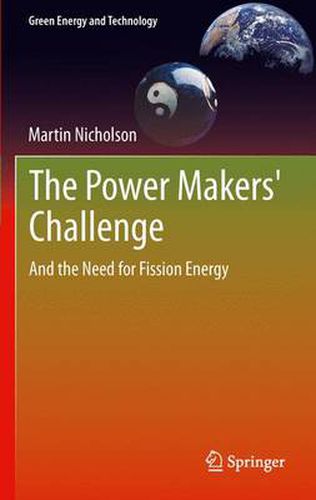Readings Newsletter
Become a Readings Member to make your shopping experience even easier.
Sign in or sign up for free!
You’re not far away from qualifying for FREE standard shipping within Australia
You’ve qualified for FREE standard shipping within Australia
The cart is loading…






This title is printed to order. This book may have been self-published. If so, we cannot guarantee the quality of the content. In the main most books will have gone through the editing process however some may not. We therefore suggest that you be aware of this before ordering this book. If in doubt check either the author or publisher’s details as we are unable to accept any returns unless they are faulty. Please contact us if you have any questions.
The Power Makers - the producers of our electricity - must meet the demands of their customers while also addressing the threat of climate change. There are widely differing views about solutions to electricity generation in an emission constrained world. Some see the problem as relatively straight forward, requiring deep cuts in emissions now by improving energy efficiency, energy conservation and using only renewable resources. Many electricity industry engineers and scientists see the problem as being much more involved.
The Power Makers ‘ Challenge: and the need for Fission Energy looks at why using only conventional renewable energy sources is not quite as simple as it seems. Following a general introduction to electricity and its distribution, the author quantifies the reductions needed in greenhouse gas emissions from the power sector in the face of ever increasing world demands for electricity. It provides some much needed background on the many energy sources available for producing electricity and discusses their advantages and limitations to meet both the emission reduction challenge and electricity demand.
By analyzing the three main groups of energy sources: renewable energy, fossil fuels and fission energy (nuclear power), readers can assess the ability of each group to meet the challenge of both reducing emissions and maintaining reliable supply at least cost. It is written for both non-technical and technical readers.
$9.00 standard shipping within Australia
FREE standard shipping within Australia for orders over $100.00
Express & International shipping calculated at checkout
This title is printed to order. This book may have been self-published. If so, we cannot guarantee the quality of the content. In the main most books will have gone through the editing process however some may not. We therefore suggest that you be aware of this before ordering this book. If in doubt check either the author or publisher’s details as we are unable to accept any returns unless they are faulty. Please contact us if you have any questions.
The Power Makers - the producers of our electricity - must meet the demands of their customers while also addressing the threat of climate change. There are widely differing views about solutions to electricity generation in an emission constrained world. Some see the problem as relatively straight forward, requiring deep cuts in emissions now by improving energy efficiency, energy conservation and using only renewable resources. Many electricity industry engineers and scientists see the problem as being much more involved.
The Power Makers ‘ Challenge: and the need for Fission Energy looks at why using only conventional renewable energy sources is not quite as simple as it seems. Following a general introduction to electricity and its distribution, the author quantifies the reductions needed in greenhouse gas emissions from the power sector in the face of ever increasing world demands for electricity. It provides some much needed background on the many energy sources available for producing electricity and discusses their advantages and limitations to meet both the emission reduction challenge and electricity demand.
By analyzing the three main groups of energy sources: renewable energy, fossil fuels and fission energy (nuclear power), readers can assess the ability of each group to meet the challenge of both reducing emissions and maintaining reliable supply at least cost. It is written for both non-technical and technical readers.